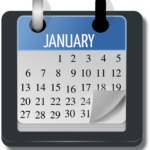
5 Reasons to Approach your Digital Marketing Plan like a Training Plan for a 10K Race
I recently viewed plans for training for a 10K (about 6 miles) race. I noticed how similar they are to how Digital Marketing plans should be run. Here are samples from Nike and MapMyRun.
Some things to notice about a 10K training plan:
- The plan is spread out over time like 12 weeks (not just week 1 and then wait 12 weeks, or run 5 miles the day before the race). A beginner plan has 15-25 miles a week for 12 weeks that’s 180 to 300 miles total. If you try to run too much in week 1, you may lose interest and be overwhelmed and quit, or worse get hurt.
- You pick a plan based on your level of experience (beginner, intermediate, advanced, competitive).
- The plan builds up a base (distance, fitness, strength).
- It includes more than running – eating, sleep, training, gear, and hydration are also addressed.
- The plan is quantitative and works with feedback.
When working with our Digital Marketing customers we provide similar recommendations on how to build these programs.
Digital Marketing equivalents:
- Distribute your content over time, not all at once.
Don’t make the mistake of sprinting out of the gate and not planning for the finish line. Delivering a whole lot of content at the beginning on your marketing web site, or social media platforms, and then leaving it stale with no updates for the next 3 months or years! Spread it out over time. Releasing material over time will provide better results than a big initial blast and will attract prospects. They will absorb what you have to say and grow to count on your content.
Developing a plan like this will also help prevent you from feeling overwhelmed.
- Build a plan based on your level of experience.
Beginner? Start small and build up your plan over several months to create wins. Try running one program at a time to learn the ropes and focus on one or two platforms to deliver and leverage your content. Target your campaigns on either new customer or existing customers initially, not both, and run one inbound campaign at a time. Measure your results, analyze, make adjustments and repeat.
Intermediate to Advanced? Then be aggressive and create, update and reuse content frequently. Run multiple, simultaneous programs on the platforms that you know your customers and prospects are using. Add in additional layers like Email Marketing, Blogs, User Groups, and add campaigns that target both new and existing customers.
- Build up your content base.
Create and distribute content and updates on a regular basis. This will encourage your readers, suspects, prospects and customers to follow your site, blog, or social media channel. When users can begin to count on your content and start consuming, sharing and coming back for more you are on the path to establishing a true digital presence.
To assist you in building up your content base, try using one of the ratio rules mentioned in our last blog entry on the Social Media Content Ratio.
- Digital Marketing Plans include more than your web site.
Content + Context = SUCCESS. You should focus on building quality content that is delivered through the right platform making it relevant to your audience. Make use of social media, public announcements, public speaking, and personal networking. Be sure to include graphics, photos, and video to enhance the user experience and get more response over just text. Put that content on traditional marketing collateral like your business cards, brochures, and include it in your print advertising.
- Follow the Content Process: Plan, Create, Distribute, Analyze, Repeat.
Plan and create your content based on your buyer personas and address each stage of the buyer’s journey. Distribute that content correctly so it is relevant and keep in mind that content promotion is infinite – yes, you can re-post an article with a fresh tagline as long as it still relevant.
Analyze your results using realistic and measurable goals. For example:
Visitors to your site – If you are at 10 visits a month currently, set the target for 100 not 1,000.
Leads generated– At what rate do you convert the visitor to someone who is interested in becoming a customer? This should be a percentage of the visitors. If you get 100 visits a month to your site and convert 10% of them into leads, that is a great return.
Sales – If you are seeing 100 visits a month, don’t set the sales goal at 50% of visits. A more realistic percentage is 1-2% of visits. The math: 100 visits per month, 10 turn into qualified leads (10% conversion rate), and 1-2 turn into sales (10-20% sales conversion rate, but 1-2% of the visits).
So, don’t be afraid to dive into your Digital Marketing. Set your goals and create a plan that can get you there over time. Stick to it, be patient, don’t tackle it all at once and remember it takes time to get results. Here’s to hoping you set some new personal records.






